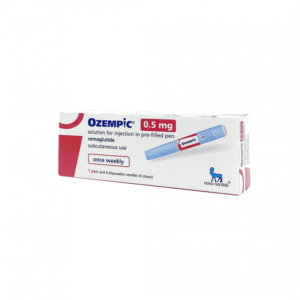Ozempic Minnesota
Understanding Ozempic in Minnesota: A Comprehensive Guide
In recent years, the prevalence of diabetes has been on the rise globally, including in the state of Minnesota. As a result, the demand for effective diabetes management has led to the emergence of innovative medications such as Ozempic. This article aims to provide a thorough understanding of Ozempic in the context of Minnesota, covering its mechanism of action, benefits, availability, and considerations for patients.
Understanding Ozempic
Ozempic is a medication approved by the Food and Drug Administration (FDA) for the treatment of type 2 diabetes. It belongs to a class of drugs known as glucagon-like peptide-1 (GLP-1) receptor agonists. The active ingredient in Ozempic is semaglutide, which works by mimicking the action of GLP-1, a hormone that regulates blood sugar levels.
Mechanism of Action
GLP-1 receptor agonists like Ozempic stimulate insulin secretion from the pancreas in response to elevated blood sugar levels. Additionally, they suppress glucagon secretion, which helps lower blood sugar levels. Moreover, GLP-1 receptor agonists slow down gastric emptying, leading to a feeling of fullness and reduced appetite, which can contribute to weight loss.
Benefits of Ozempic
- Effective Blood Sugar Control: Clinical trials have shown that Ozempic effectively lowers blood sugar levels in patients with type 2 diabetes.
- Weight Loss: Many patients experience weight loss as a beneficial side effect of Ozempic treatment.
- Cardiovascular Benefits: Studies have indicated potential cardiovascular benefits associated with Ozempic use, including a reduced risk of cardiovascular events.
Availability in Minnesota
Ozempic is available by prescription in pharmacies throughout Minnesota. Patients can consult their healthcare providers to determine if Ozempic is an appropriate treatment option for their diabetes management.
Considerations for Patients
- Dosage and Administration: Ozempic is typically administered once weekly via subcutaneous injection. It is important for patients to follow the prescribed dosage and administration instructions provided by their healthcare provider.
- Side Effects: Common side effects of Ozempic may include nausea, vomiting, diarrhea, and constipation. Patients should report any persistent or severe side effects to their healthcare provider.
- Cost and Insurance Coverage: The cost of Ozempic may vary depending on factors such as insurance coverage and pharmacy pricing. Patients are encouraged to explore available insurance coverage options and assistance programs to help mitigate out-of-pocket expenses.
Conclusion
Ozempic represents a valuable treatment option for individuals living with type 2 diabetes in Minnesota. Its mechanism of action, benefits, availability, and considerations for patients make it a significant addition to diabetes management strategies. By working closely with healthcare providers and staying informed about their treatment options, patients can effectively incorporate Ozempic into their diabetes care regimen to achieve better health outcomes.
Showing the single result




